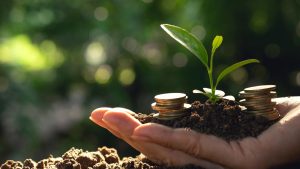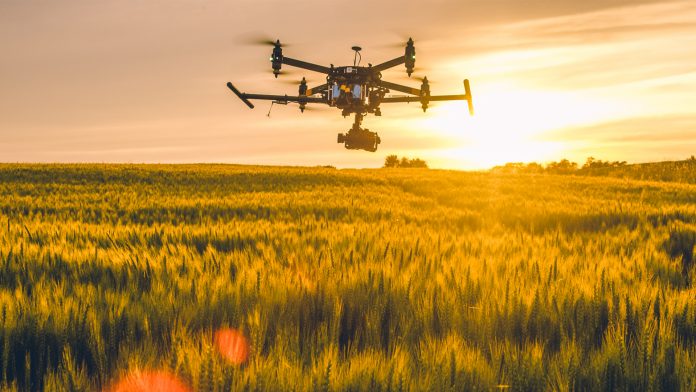Today’s agriculture uses some of the most sophisticated technologies available today. Farmers use robots, moisture sensors and aerial imaging to ensure the success of their crops, but what’s next?
According to the National Institute of Food and Agriculture, USA, the way in which modern farms function greatly differs from the farms of a couple of decades ago. This is because “primarily because of advancements in technology, including sensors, devices, machines, and information technology.
“Today’s agriculture routinely uses sophisticated technologies such as robots, temperature and moisture sensors, aerial images, and GPS technology.”
Could vertical farming rise to the top?
Vertical farming is a type of farming that is used to produce food and medicinal plants. These farms are set up with the aim of growing food in challenging environment. The primary aim of vertical farming is to maximise the area per square meter. A vertical farming system involves the use of artificial temperature, light, humidity, and other gases.
The constantly rising global population, coupled with the growing demand for plants and other vegetation. Increasing adoption of vertical farming is attributable to the growing demand for environment-friendly ways of producing vegetables and fruits. Increasing concerns regarding organic food will contribute to the growing demand for vertical farming.

The global vertical farming market size is projected to reach $12.04bn (~€10.8bn) by 2026. Increasing technological advancements have allowed improved efficacies as well as enhanced output.
According to a report published by Fortune Business Insights, the market was worth $2.13bn in 2018 and will exhibit a CAGR of 24.8% during the forecast period, 2019-2026.
The report encompasses several factors that have contributed to the growth of the market in recent years. Among all factors, the increasing number of company mergers have had the highest impact on market growth.
The increasing investment in the development of newer vertical farming equipment, coupled with the efforts put in to acquire medium as well as small scale enterprises will contribute to the growth of the market. In 2017, Signify Holding. (Philips Lighting) announced a collaboration with Ecobain Gardens to build the first ever commercial vertical farm operation in Canada.
This partnership offers customers attractive returns on investments via healthier, nutritious and rich foods that attract new customers. The report identifies a few of the leading company mergers of recent times and gauges their impact on the growth of the market.
The report analyses the ongoing vertical farming market trends across major regions including North America, Latin America, Europe, Asia Pacific, and the Middle East and Africa. The market in Asia Pacific is projected to dominate the market in the coming years, driven by growing incorporation of technologically advanced systems in vertical farming practices. Besides Asia Pacific, the market in North America will witness considerable growth in the coming years, owing to increasing investments in product R&D. As of 2018, the market in North America was worth $664.7m and this value is likely to increase further in the coming years.
Smart agriculture to yield huge profits
The scope of the global Smart Agriculture/Farming Market was appreciated at $5.79bn in 2016 and will touch the value of $18.21bn by the completion of the year 2025.
Smart agriculture is maintainable agriculture. It utilises expertise; for example, IoT, Cloud centred services, GPS and Big Data. Skills for example Machine-to-Machine, Agricultural Robots, Infrastructural Health Sensors and Biometrics of Livestock are progressively being acknowledged by the sector of agriculture to save the labour charges, and capitalise on profitability, production, sustainability and production.
Smart agriculture consists of gathering of information and study, control of harvest with greater accuracy, and mechanisation of farming methods. Smart agriculture utilises micro-controllers, camera, sensors, actuators, and modules of connectivity to support agriculturalists to govern and control agricultural processes, distantly, by means of smart devices. The growing populace and the increasing demand for foodstuff have stimulated the usage of contemporary and smart expertise for agriculture.
Growing costs of manual labour combined with scarcity of manual labour in farms has amplified the demand for smart agriculture. The inadequate availability of land for farming, development in the global business of agriculture, increasing worries regarding environment, ever-changing emphasis in the direction of organic foodstuff, and worries about shortage of natural resources are additional features backing the development of the market.

Incorporation of skills and subsidizations from governments have fast-tracked the acceptance of smart agriculture. Increasing demand from developing nations and technical progressions are the reasons likely to deliver many openings for the development during the approaching years.
However, greater primary investment limits the development of the smart agriculture market. Similarly, the absence of agriculturalists having technical understanding is likely to constrain the development of the global market during the subsequent years.
Furthermore, the matters related to the data accumulation, data administration, and the absence of standardisation in the smart farming market are the most important tasks that are being confronted by the important companies and expected to restrain the development of the market during the nearby future. However, the arrival of big data in agriculture farm and the combination of smartphone with software and hardware uses are expected to propose prospective development openings for the companies during the forthcoming years.
Using modern technology to monitor crop health
Gestion AgrIA has just received a financial contribution of $4.7m from the Government of Quebec, through the Green Fund, to complete a key research project that is helping growers boost their productivity while significantly reducing greenhouse gas (GHG) emissions.
AgrIA is an NPO founded by three partners: Hortau, Les Fermes Tri-Jardins, and Houblon des Jarrets Noirs. It draws on the knowledge, expertise, and know-how of many businesses, research institutions, technology transfer centres, and agricultural producers.
“Let’s remember,” said Jocelyn Boudreau, co-founder and CEO of Hortau, “that agriculture uses 40% of earth’s habitable land and 70% of its water resources. The global population will reach 10 billion in 2050 and, according to the UN, if we do not manage to produce more food with less water and less farmland, it will take two planets to feed everyone.”
Hortau and its partners have been working since late 2017 on developing the first predictive and global monitoring tool for crop production in order to substantially boost yields and productivity while reducing inputs such as water, fertiliser, pesticides, and energy.
The new, fully digital multivariate technology redefines the needs, diagnosis methods, and approaches used in agronomic interventions through real-time, continuous measurements and techniques from the field of artificial intelligence (AI), including machine learning. It also significantly reduces the inputs, pollution, and greenhouse gases for a given harvest volume. Hortau has been developing the approach since 2008, making it the Internet of Things (IoT) pioneer in the agricultural sector.
Added Boudreau, “Our new technology has exciting environmental and economic benefits for growers and will benefit the many Canadian businesses that serve our Lévis production centre.”
Gestion AgrIA’s overall budget is $13m and contributes to the broader Hortau project, whose budget is $20m. With the company’s anticipated growth, Hortau and its numerous suppliers are expected to create plenty of high-quality jobs, both at Hortau and with its many suppliers.







